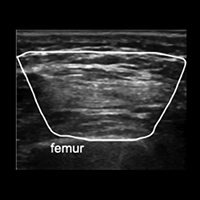Respiratory and peripheral muscle involvement in patients with pulmonary arterial hypertension due to congenital heart diseases

Submitted: August 6, 2020
Accepted: December 1, 2020
Published: March 31, 2021
Accepted: December 1, 2020
Abstract Views: 1170
PDF: 575
Publisher's note
All claims expressed in this article are solely those of the authors and do not necessarily represent those of their affiliated organizations, or those of the publisher, the editors and the reviewers. Any product that may be evaluated in this article or claim that may be made by its manufacturer is not guaranteed or endorsed by the publisher.
All claims expressed in this article are solely those of the authors and do not necessarily represent those of their affiliated organizations, or those of the publisher, the editors and the reviewers. Any product that may be evaluated in this article or claim that may be made by its manufacturer is not guaranteed or endorsed by the publisher.
Similar Articles
- Paolo Ruggeri, Federica Lo Bello, Francesco Nucera, Michele Gaeta, Francesco Monaco, Gaetano Caramori, Giuseppe Girbino, Hereditary hyperhomocysteinemia associated with nephrotic syndrome complicated by artery thrombosis and chronic thromboembolic pulmonary hypertension: A case report , Monaldi Archives for Chest Disease: Vol. 87 No. 3 (2017)
- Massimiliano Polastri, Lara Pisani, Andrea Dell'Amore, Stefano Nava, Revolving door respiratory patients: A rehabilitative perspective , Monaldi Archives for Chest Disease: Vol. 87 No. 3 (2017)
- Berardo Sarubbi, Giancarlo Scognamiglio, Flavia Fusco, Enrico Melillo, Michele D'Alto, Maria Giovanna Russo, A “long-standing†malpositioned pacing lead. Long-term follow-up after extraction , Monaldi Archives for Chest Disease: Vol. 88 No. 3 (2018)
- Halil Yanardag, Cuneyt Tetikkurt, Muammer Bilir, Clinical and prognostic significance of muscle biopsy in sarcoidosis , Monaldi Archives for Chest Disease: Vol. 88 No. 1 (2018)
- Abhishekl Agarwal, Sakshi Batra, Rajendra Prasad, Anand Verma, Abdul Q. Jilani, Surya Kant, A study on the prevalence of depression and the severity of depression in patients of chronic obstructive pulmonary disease in a semi-urban Indian population , Monaldi Archives for Chest Disease: Vol. 88 No. 1 (2018)
- Alfonso Sforza, Maria V. Carlino, Giovanni Albano, Maria I. Arnone, Giuliano De Stefano, Andrea D'Amato, Federica De Pisapia, Giovanni de Simone, Costantino Mancusi, A challenging diagnosis of dyspnea: A case report of contralateral reexpansion pulmonary edema , Monaldi Archives for Chest Disease: Vol. 88 No. 1 (2018)
- Abhijeet Singh, Rajendra Prasad, Rajiv Garg, Surya Kant, Giridhar B. Hosmane, Abhisek Dubey, Abhisek Agarwal, Ram Kishun Verma, A study to estimate prevalence and risk factors of Obstructive Sleep Apnoea Syndrome in a semi-urban Indian population , Monaldi Archives for Chest Disease: Vol. 87 No. 1 (2017)
- Michele Correale, Deodata Montrone, Donato Lacedonia, Riccardo Ieva, Romano Bucci, Addolorata Corrado, Francesco Paolo Cantatore, Carmen Adriana Greco, Morena Concilio, Gaetano Serviddio, Maria Pia Foschino Barbaro, Matteo Di Biase, Natale Daniele Brunetti, Multiprofessional and Intrahospital Experience for Diagnosis and Treatment of Pulmonary Arterial Hypertension , Monaldi Archives for Chest Disease: Vol. 78 No. 4 (2012): Cardiac series
- Sergio C. Conte, Giulia Spagnol, Marco Confalonieri, Beatrice Brizi, Deep sedation versus minimal sedation during endobronchial ultrasound transbronchial needle aspiration , Monaldi Archives for Chest Disease: Vol. 88 No. 3 (2018)
- Alberto Genovesi Ebert, Furio Colivicchi, Marco Malvezzi Caracciolo, Carmine Riccio, Additive beneficial effects of beta blockers in the prevention of symptomatic heart failure , Monaldi Archives for Chest Disease: Vol. 72 No. 1 (2009): Cardiac series
You may also start an advanced similarity search for this article.

 https://doi.org/10.4081/monaldi.2021.1551
https://doi.org/10.4081/monaldi.2021.1551





